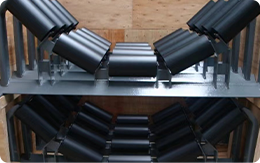 Afrikaans
Afrikaans  Albanian
Albanian  Amharic
Amharic  Arabic
Arabic  Armenian
Armenian  Azerbaijani
Azerbaijani  Basque
Basque  Belarusian
Belarusian  Bengali
Bengali  Bosnian
Bosnian  Bulgarian
Bulgarian  Catalan
Catalan  Cebuano
Cebuano  Corsican
Corsican  Croatian
Croatian  Czech
Czech  Danish
Danish  Dutch
Dutch  English
English  Esperanto
Esperanto  Estonian
Estonian  Finnish
Finnish  French
French  Frisian
Frisian  Galician
Galician  Georgian
Georgian  German
German  Greek
Greek  Gujarati
Gujarati  Haitian Creole
Haitian Creole  hausa
hausa  hawaiian
hawaiian  Hebrew
Hebrew  Hindi
Hindi  Miao
Miao  Hungarian
Hungarian  Icelandic
Icelandic  igbo
igbo  Indonesian
Indonesian  irish
irish  Italian
Italian  Japanese
Japanese  Javanese
Javanese  Kannada
Kannada  kazakh
kazakh  Khmer
Khmer  Rwandese
Rwandese  Korean
Korean  Kurdish
Kurdish  Kyrgyz
Kyrgyz  Lao
Lao  Latin
Latin  Latvian
Latvian  Lithuanian
Lithuanian  Luxembourgish
Luxembourgish  Macedonian
Macedonian  Malgashi
Malgashi  Malay
Malay  Malayalam
Malayalam  Maltese
Maltese  Maori
Maori  Marathi
Marathi  Mongolian
Mongolian  Myanmar
Myanmar  Nepali
Nepali  Norwegian
Norwegian  Norwegian
Norwegian  Occitan
Occitan  Pashto
Pashto  Persian
Persian  Polish
Polish  Portuguese
Portuguese  Punjabi
Punjabi  Romanian
Romanian  Russian
Russian  Samoan
Samoan  Scottish Gaelic
Scottish Gaelic  Serbian
Serbian  Sesotho
Sesotho  Shona
Shona  Sindhi
Sindhi  Sinhala
Sinhala  Slovak
Slovak  Slovenian
Slovenian  Somali
Somali  Spanish
Spanish  Sundanese
Sundanese  Swahili
Swahili  Swedish
Swedish  Tagalog
Tagalog  Tajik
Tajik  Tamil
Tamil  Tatar
Tatar  Telugu
Telugu  Thai
Thai  Turkish
Turkish  Turkmen
Turkmen  Ukrainian
Ukrainian  Urdu
Urdu  Uighur
Uighur  Uzbek
Uzbek  Vietnamese
Vietnamese  Welsh
Welsh  Bantu
Bantu  Yiddish
Yiddish  Yoruba
Yoruba  Zulu
Zulu types of pulley in belt conveyor
Understanding the Types of Pulleys in Belt Conveyors
Belt conveyors are essential components in various industries, facilitating the movement of materials from one point to another efficiently. A crucial part of the belt conveyor system is the pulley, which plays a significant role in the operation and performance of the conveyor. Pulleys are mechanisms that provide tension to the belt, change the direction of the belt movement, and support the weight of the materials being transported. In this article, we will explore the different types of pulleys used in belt conveyors and their specific functions.
1. Head Pulley
The head pulley is typically located at the discharge end of the conveyor system and is one of the most critical components. Its primary function is to drive the belt and facilitate the movement of materials off the conveyor. The head pulley is usually equipped with a drive motor that provides the necessary torque to propel the belt forward. Additionally, head pulleys can have various surface finishes, such as smooth or rubberized, to enhance their grip on the belt and prevent slippage.
2. Tail Pulley
Opposite to the head pulley, the tail pulley is positioned at the loading end of the conveyor. Its main function is to provide tension to the conveyor belt while ensuring it remains taut during operation. The tail pulley is often designed with a smaller diameter than the head pulley, and its design can vary depending on the specific requirements of the conveyor system. Efficient tensioning by the tail pulley is crucial for maintaining the proper alignment and functioning of the belt.
types of pulley in belt conveyor

Deflection pulleys, also known as guide pulleys, are used to redirect the belt in different directions along the conveyor path. They are strategically placed to guide the belt around corners or to direct it back towards the return path. These pulleys help in maintaining the belt’s alignment and preventing it from tracking off course, which can lead to wear and damage over time. Deflection pulleys must be carefully selected to ensure they can handle the stress of the belt movement without causing premature wear.
4. Take-Up Pulley
The take-up pulley is an essential component in maintaining the correct tension of the conveyor belt. It is typically used in tensioning systems that adjust the belt length to accommodate wear and elongation over time. By providing a method for adjusting the belt’s tension, the take-up pulley ensures optimal performance and minimizes the risk of belt slippage or misalignment. Take-up systems can be manual or automatic, allowing for easy adjustments and maintenance.
5. Snub Pulley
Snub pulleys are used to increase the contact surface area between the belt and the drive pulley. By doing so, they enhance the friction and grip, effectively preventing slippage. This is particularly important in applications where heavy materials are being conveyed. Snub pulleys can be installed on either side of the drive pulley and play a critical role in ensuring that the conveyor system operates smoothly, especially under heavy loads.
Conclusion
Understanding the various types of pulleys in a belt conveyor system is essential for the design, operation, and maintenance of these systems. Each type of pulley serves a specific purpose, contributing to the overall efficiency and effectiveness of the conveyor. Proper selection and maintenance of these components can significantly impact the performance and longevity of the conveyor system, leading to reduced downtime and increased productivity. As industries continue to evolve, the design and application of pulleys in belt conveyors will also advance, bringing about innovations that enhance material handling processes.
-
Trusted Conveyor Solutions from Leading Conveyor Idler Roller ManufacturersNewsJun.27,2025
-
Reliable Return Idler Solutions for Efficient Belt Conveyor SystemsNewsJun.27,2025
-
Precision Conveyor Accessories for Streamlined Material HandlingNewsJun.27,2025
-
High-Quality Belt Conveyor Idler Solutions for Efficient Material HandlingNewsJun.27,2025
-
High-Performance Belt Conveyor Pulleys for Reliable Material HandlingNewsJun.27,2025
-
Enhancing Material Handling EfficiencyNewsJun.27,2025





























